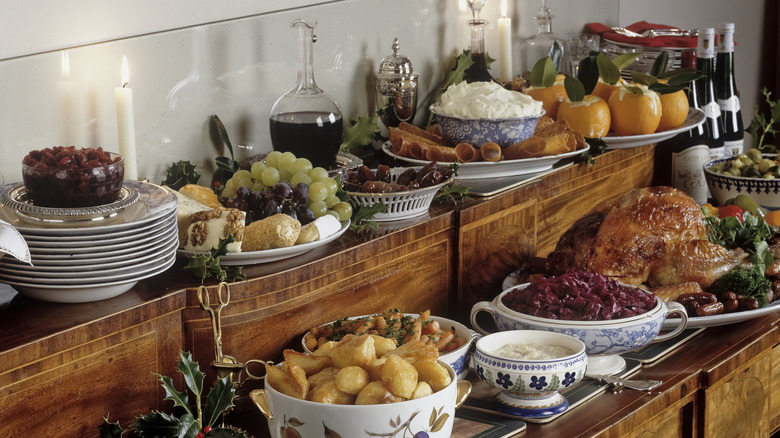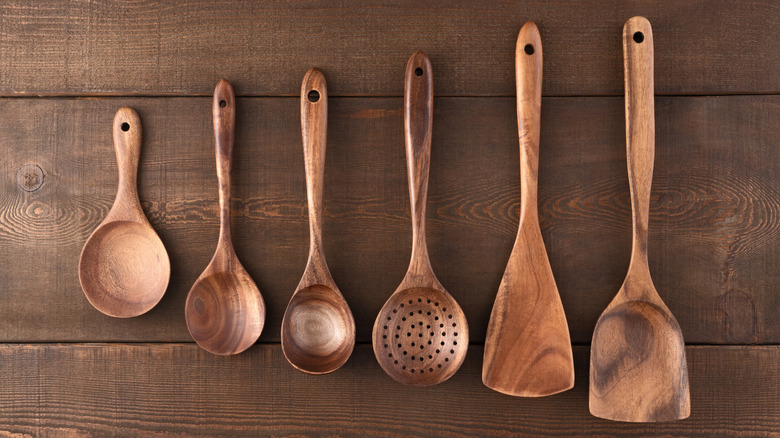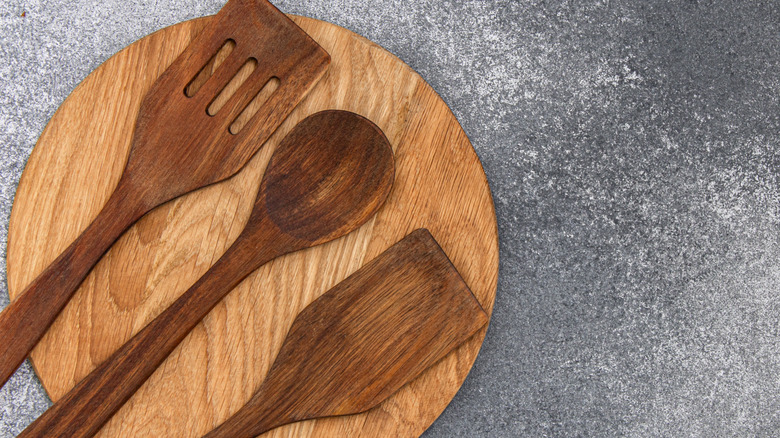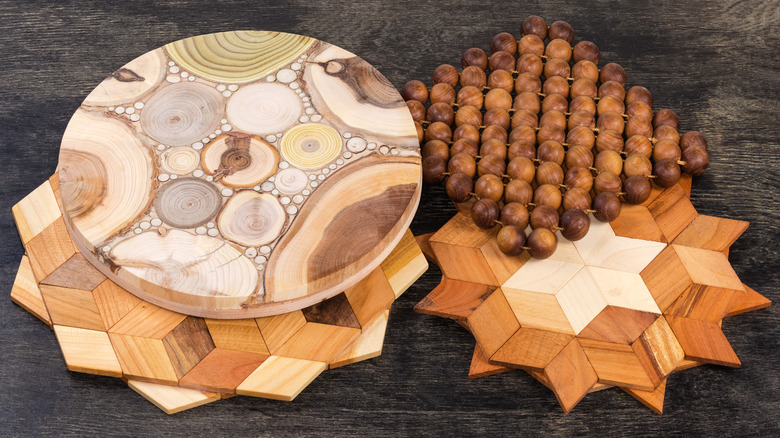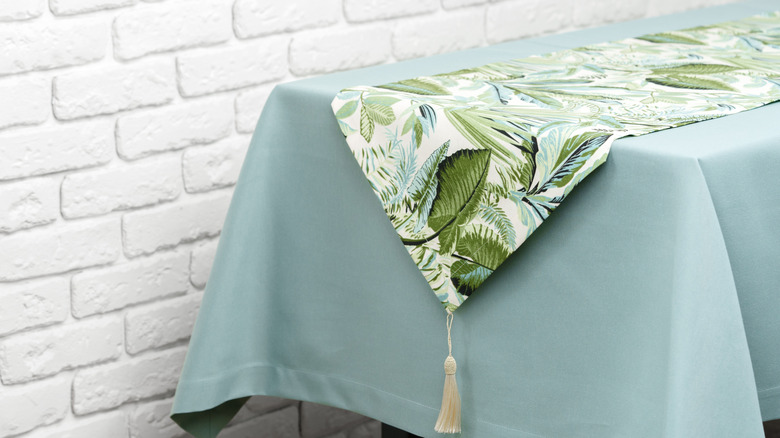5 Must-Have Items You Need On Your Buffet Table
Hosting a great party without an assortment of food for your guests is hard. And it's hard to serve all that food at once without having somewhere to put it. Enter the humble buffet table, sometimes called a sideboard, which forms the centerpiece of a successful home buffet setup for any party.
There are a couple of must-haves for any buffet table, several of which revolve around the hygiene of a self-serve food setup for a large group. For instance, you need to provide a way for guests to get the food onto their plates and somewhere for them to put those utensils other than back into the food.
Another crucial part is to keep your buffet table in good condition to remain an attractive centerpiece for the room. Some buffet items may require large platters to be attractively served, while others can be displayed in their cooking vessels — with, of course, a heat-resistant support underneath so you don't scorch the table. And don't forget some kind of cover for the table, either, to protect it against food stains.
1. Serving utensils
Start with the basics for your buffet setup. It's important to have a clean, hygienic way for guests to serve themselves from communal serving trays. There's no better way to do this than by providing serving utensils of the appropriate type.
Serving tongs are great for items large enough to pick up with one hand, like bread rolls, steaks, fish filets, chicken pieces, and more. Spoons are ideal for mashes, purees, and casseroles; forks are great for pastas, sliced meats, and so on.
Serving utensils are crucial for cleanliness. Their long handles help keep people's hands away from the food as they serve themselves, as opposed to everyday utensils, which would practically invite guests to touch everything. They also assist with portioning, so you can get an appropriately sized serving quickly instead of piling on food bit by bit, wondering all along if you've gotten enough yet.
2. Utensil rests
It's equally important to have somewhere to place serving utensils when they're not actively being used. A popular choice in some setups is simply leaving them in the food. After all, if the spoon is only used for the dish in which it stays, where's the contamination coming from?
Leaving serving utensils in the food poses a contamination risk from everyone's hands. When people touch the handle, bacteria from their hands gets on the handle. When the utensil is placed back in the food, it has plenty of time to act as a bridge for said bacteria to work its way into the food. The utensil may even slide fully into the pan, compounding this effect and making it messier to use.
Utensil rests are crucial for keeping everything as neat and bacteria-free as possible. It's not a guarantee of cleanliness or safety. There are certain inherent risks with the very concept of buffet dining, but with the proper precautions like these, the risks can be significantly reduced.
3. Serving platters
Home buffets often serve food in cooking vessels beautiful enough to be considered part of the room's décor. But this isn't always practical, either. You may see rotisserie chicken on a home buffet, but you're unlikely to see a cooking spit mounted on a buffet table.
Serving platters are a must-have for foods that are inconvenient or impossible to serve in their cooking vessels. This prominently includes anything that should be butchered or carved before it gets to guests, like whole chickens and turkeys, or beef brisket.
Serving platters are also great for foods that are cumbersome or unattractive to serve straight out of the oven. For instance, there's little problem with using a sheet pan to roast vegetables, but it's a large item for a buffet table. And if your sheet pan is years-old, it may clash with otherwise polished aesthetics. A fresh, clean serving platter neutralizes these problems.
4. Trivets
Home cooks cherish certain cookware brands like Staub and Le Creuset partly for their decades of demonstrated high quality, but also because they're visually attractive pieces. Part of the reason these brands are so aesthetically appealing is that food can be served directly out of the cookware.
But these pots and pans get quite hot during cooking, and the ones made of cast iron can retain heat for longer. Trivets, which are also called hot pads, are perfect for protecting sensitive surfaces like buffet tables from being damaged by hot cookware. They may be one of the old-school kitchen tools that many people stopped using, but they still have a purpose in this case.
Trivets can be made of almost anything. Wood, ceramic, metal, silicone, various fabrics, and cork are all typical materials, but the commonality is that they will all dissipate the pan's heat before it reaches the table underneath. While trivets are essential to avoid a scorched buffet table, they won't do anything to protect from other damage.
5. Table runners
Anyone who's enjoyed a buffet knows that even with the best intentions and practices, it can sometimes still get messy. Luckily, it's easy to protect your buffet table from an array of splashes and stains with a table runner.
Table runners are perhaps most commonly seen on dining tables. They're often relatively narrow compared to the table, aesthetically serving as an accent stripe through the middle. But buffet tables are generally much narrower than a dining table, and their tops should be mostly or completely covered by the runner.
Use that fuller coverage as an expansive physical barrier against all sorts of food spills. Many table runners these days are also waterproof, which is ideal for protecting the buffet table from particularly difficult stains like tomato sauce and red wine. Or, for a more creative twist, you can make your own table runner with parchment paper and chalkboard paint.
